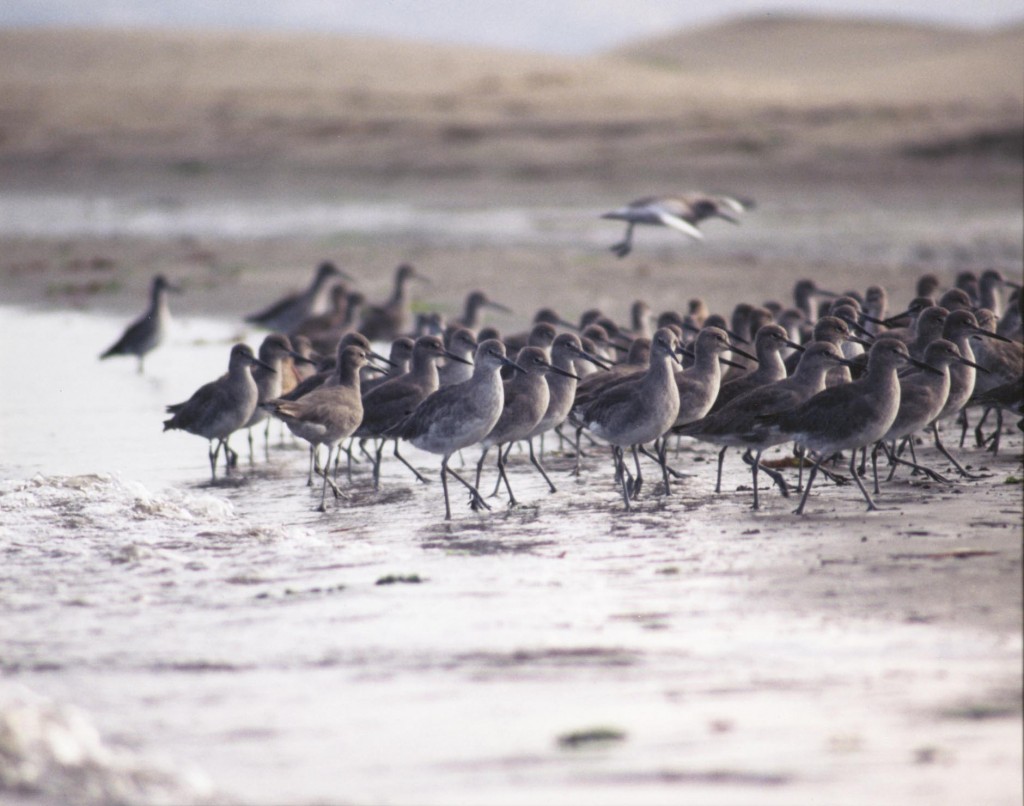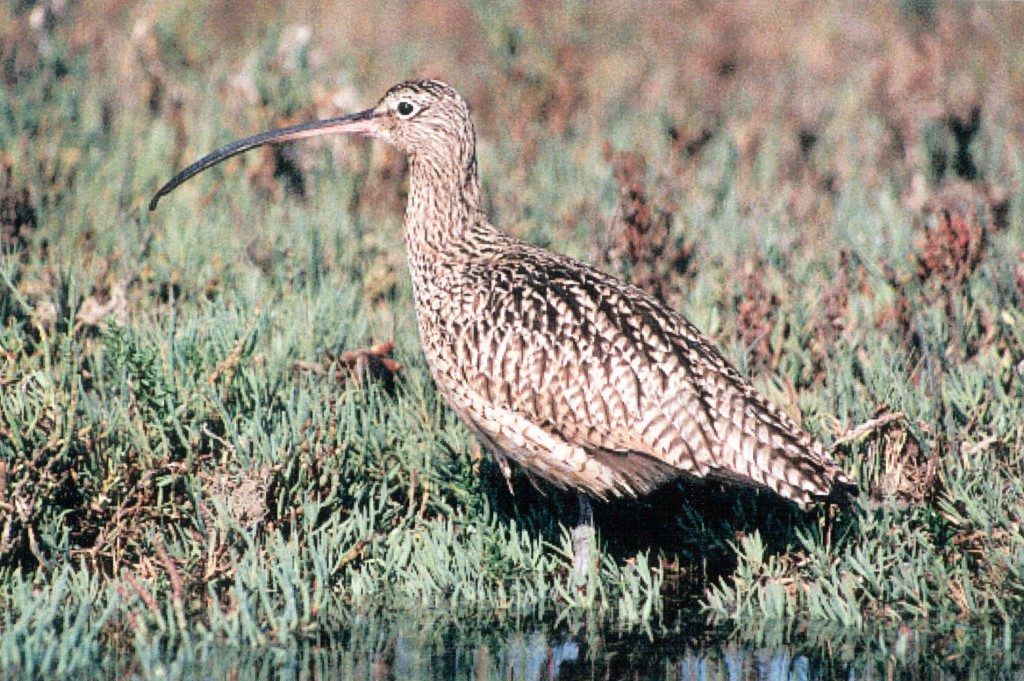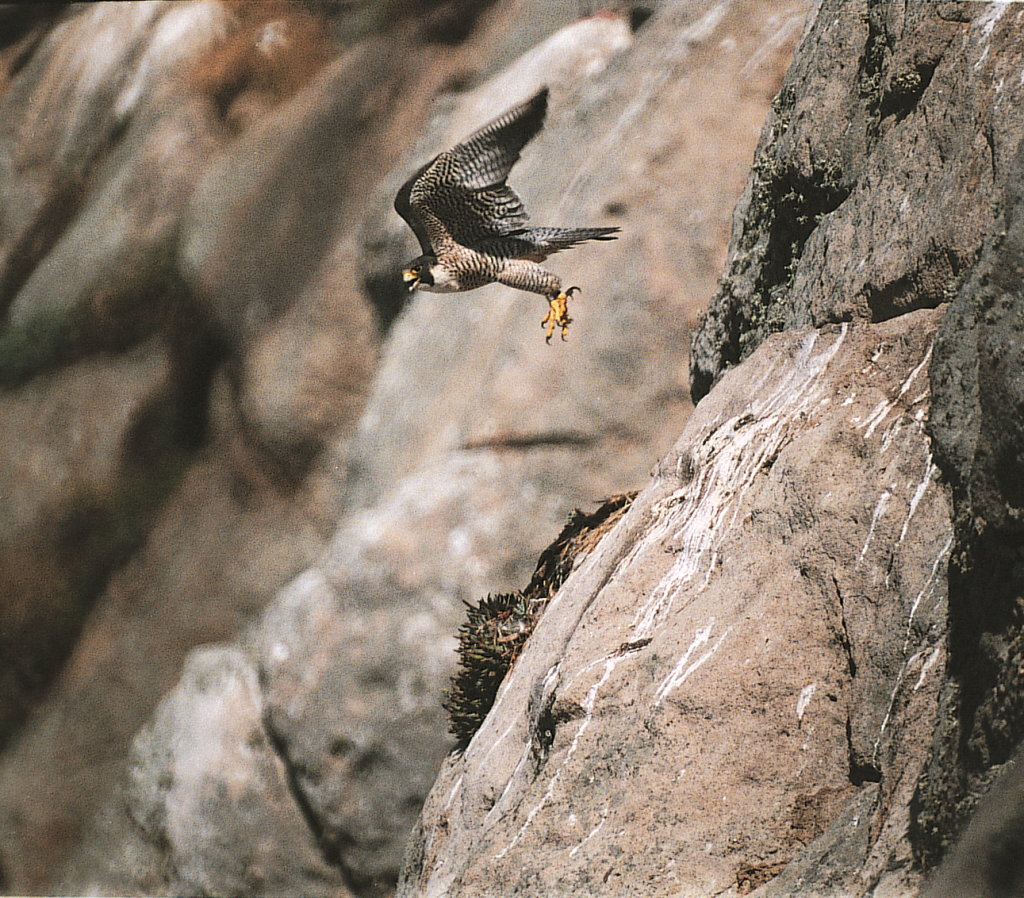At least one billion birds migrate along the Pacific Flyway each year. (One billion birds!) Most of these birds migrate at night. They take off near sunset, moving together in groups that can be seen as large colorful swirls on Doppler radar.
In the winter, thousands of these migrating birds make a much-needed stopover in Morro Bay, foraging for food and resting on and near its clean waters in order to conserve energy for the continuation of their journeys.

The Estuary Program recently talked with Dave Tyra, President of the Morro Coast Audubon Society (MCAS) about Morro Bay’s birds.
Dave mentioned that Morro Bay is recognized as an Important Bird Area in part because it provides essential habitat to the birds migrating along the Pacific Flyway. Thousands of shorebirds—as many as 20,000 per year—stop to feed on the abundance of its mudflats and the shallow waters of the estuary itself.
The long-billed curlew is one of the migratory species that Dave enjoys seeing in Morro Bay. Long-billed curlews travel thousands of miles to get here, breeding in the grasslands of the Great Plains, and then heading to the coast to find tidal mudflats—like those in our back bay. You’ll often see curlews using their long, curved beaks to pull small crabs and other invertebrates from the mud along the water’s edge.

While Morro Bay’s mudflats provide respite and much-needed food for the curlews, Dave is worried about what the future holds for this bird. The National Audubon Society recently released a report on climate change and its impact on birds, which found that the curlew’s summer range in the Midwest is threatened. It is possible that 99% of this summer range may be lost by 2080, which could make it difficult for the birds to find suitable breeding grounds. (Find an animated map showing the changes to the long-billed curlew’s summer and winter ranges here.)
While there is definitely cause for concern, understanding the possible impacts of climate change is the first step in understanding how to respond to them effectively.

The MCAS was established 50 years ago, Dave reminds us, because Morro Rock was one of the only places left to find another bird facing a serious threat to its existence: the peregrine falcon. Today, thanks to intensive conservation efforts, peregrine falcon populations are recovering. There are still two breeding pairs of peregrine falcons on Morro Rock.
As Dave says, “When you think about it, whatever you can do that is good for birds is good for human beings, too.”
Many thanks to Dave Tyra of the Morro Coast Audubon Society for sharing his time and expertise!
Find tips for bird- and bay-friendly living in our Bayside Living Guide.